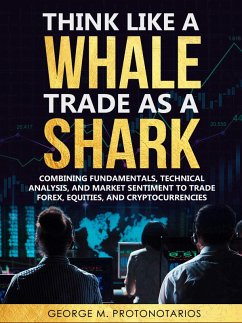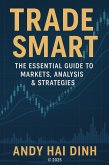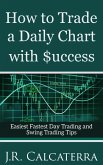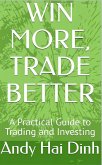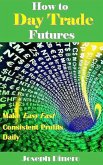- Chapter 1 introduces essential economic and financial drivers across equities, currency pairs, and cryptocurrencies. Fundamentals reveal risk and reward, the core inputs of every rational investment decision. The objective always remains the same: identify assets whose market price deviates from their true value.
- Chapters 2 through 6 explore technical analysis in depth, supported by practical examples and charts. Visual price behavior is easier to understand than raw data. You will learn how to recognize trends, identify support and resistance, and apply moving averages, RSI, and Fibonacci ratios. Combined, these tools help you define market structure, recognize emerging trends, anticipate reversals, and most critically measure trading ranges with precision. Successful traders do not predict; they quantify.
- Chapter 7 focuses on volatility, arguably the most overlooked driver by investors. You will learn how volatility shapes risk and return, how to diversify effectively, and how to apply Bollinger Bands and ATR when trading indices, along with Beta when evaluating individual stocks. You will also examine the VIX Index, option-driven volatility signals, and the distinct volatility characteristics of Forex and cryptocurrency markets.
- Chapter 8 covers seasonality and recurring market trends in global financial markets. Seasonal patterns highlight periods where markets consistently behave in a similar way, offering a statistical advantage. You will study seasonal behavior across the Dow Jones Industrial Average, major currency pairs (EUR/USD, GBP/USD, USD/JPY), and leading crypto markets (BTC/USD and ETH/USD). The goal is to understand disciplined probability, not rely blindly on historical patterns.
- Chapter 9 examines sentiment and how investors think, react, and sometimes panic. Disciplined traders position themselves with professional money and frequently adopt a contrarian stance against the broader public. The most powerful trades often arise when public emotion diverges from institutional positioning. You will study the Fear & Greed Index, repo market signals, perpetual funding behavior, and the Commitment of Traders (COT) report. These tools can help traders identify crowd extremes and smart-money footprints.
- Portfolio diversification remains a timeless principle in finance. Chapter 10 covers money management -the art of survival. You will learn how to eliminate unnecessary risk, allocate capital effectively, size positions, evaluate reward-to-risk dynamics, and understand why professional traders operate with modest trade size. Preservation fuels longevity; longevity fuels compounding.
Taken together, these resources provide a practical blueprint for navigating global markets with one core objective: improving your probability of success. Real trading edge comes from education, emotional control, and respect for uncertainty. As your knowledge deepens, your discipline strengthens when others are greedy, and your hands remain strong when others are fearful.
Happy reading
Giorgos Protonotarios, Financial Analyst TradingCenter.org
Dieser Download kann aus rechtlichen Gründen nur mit Rechnungsadresse in A, B, CY, CZ, D, DK, EW, E, FIN, F, GR, H, IRL, I, LT, L, LR, M, NL, PL, P, R, S, SLO, SK ausgeliefert werden.

